Genre: Strategy Developer: Micronet Publisher: Micronet Players: 1 Released: 1991
“Who is it in the press that calls on me?
I hear a tongue shriller than all the music
Cry ‘Caesar.’ Speak! Caesar is turned to hear.”
– William Shakespeare, Julius Caesar, I:ii
Here’s an experiment. The next time you visit a fellow Genesis fan, ask to see his or her collection of boxed games. Next, take note of the games that look fresh and clean (which suggests they get played frequently), and the ones that are covered in a thick layer of dust. Now, which games were the dustiest?
The answer is probably a safe bet: we all have different tastes, but in an average collection, it’s usually the strategy/simulation games that gather cobwebs and dust bunnies. Time-consuming, hard to learn, and unwelcoming to casual players, they had limited appeal even in their own era, and struggle to compete with the bells and whistles of more recent titles.
Enter Warrior of Rome, a game seemingly forgotten by time. Released in 1991 and published by Micronet, it appears to have been practically ignored by the Genesis community, despite the fact that it’s a Genesis exclusive. There’s almost nothing substantial about it on the Internet, and I only found one other review in preparing to write this one.
So, is Warrior of Rome a hidden gem that “doth not wrong” or should it be “spurned like a cur?” Read on.
Act I
“I shall remember.
When Caesar says, ‘Do this,’ it is performed.”
– Shakespeare, Julius Caesar, I:ii
In Warrior of Rome, you’re Julius Caesar, fighting your way across the Mediterranean for a reunion with your beloved Cleopatra. The game’s four stages include a battle against pirates, an escort mission across the sea, an attack on the city of Alexandria, and a final push through a heavily fortified palace to rescue Cleopatra from rebels. In all of these stages except the last, you have to defend certain mission-critical structures – bridges, ships, bases – while simultaneously launching an offensive against enemy targets.
Your forces include ten numbered army units. Numbers one through four are your elite combat units, numbers five to seven are your “reinforcement units” (but more on this later), and numbers eight to 10 are your engineering corps, who specialize in tearing down and putting up “traps”, or barriers that impede troop movement. In the first stage, half of your army arrives late to the scene, and in stage two your warriors board ten ships to protect a flagship crossing the Mediterranean, but otherwise your units remain more or less the same from mission to mission. They can move slowly or quickly (which drains their stamina), build or demolish obstacles, enter battle and retreat, and that’s basically it.
The game provides a brief password when you successfully complete a stage but also features a RAM disk that allows you to instantly save or load your game at any time as long as the console stays on. I’ve seen this technique before in Faery Tale Adventure where it was a huge asset, and it works just as well here.
Warrior of Rome is essentially a real-time strategy game but an extremely linear one with no real opportunities for customization. It offers no difficulty options, character selections, honing skills, or other ways to change things up: what you see is what you get, and that’s it. This edges Warrior of Rome closer to JRPG territory, and the attractive (but unskippable) cut scenes that play before and after each stage only heighten that impression. (When you finally reach Cleopatra, she looks more like Princess Mononoke than Elizabeth Taylor.)
The game’s presentation is passable. The visuals are minimal, with two-frame animations typical of the genre but at least they’re clear and easy to understand (though the fonts look a bit cheap). On the other hand, the music is forgettable at best, and in the third stage it’s flagrantly out of tune.
All of this sounds reasonable enough, but how is the gameplay? Well, it’s here that Warrior of Rome falls apart.
Act II
“I could be well moved, if I were as you.
If I could pray to move, prayers would move me.”
– Shakespeare, Julius Caesar, III:ii
The problems with Warrior of Rome can basically be divided into two categories. The first is that at critical moments, the game is hopelessly, needlessly obscure. Some of this is built into the gameplay itself. For example, when one of your units gets into battle, you’re presented with a notification pop-up whose options are “CONFIRM” and “IN THIS MANNER.” These cryptic choices really mean “watch this battle” and “don’t watch this battle,” and eventually you get used to this sort of thing, but it doesn’t leave a good first impression.
A much bigger issue, however, is the manual. Any veteran of strategy/sim titles knows the manual is a crucial source of information without which the game can be almost unplayable. This is especially true of cartridge-based games, which don’t usually have much extra ROM space for extensive help files and in-game documentation.
Unfortunately, Warrior of Rome‘s manual is a disaster. Full of typos (“everythig,” “fonest”) and hopelessly banal advice (“Keep moving”), it fails to document important features in the game and commits the far more serious crime of actively misleading the player. For instance, let’s take the following text from the manual, describing your mission in stage one (Hagia Triada):
Your goal is to get all your soldiers to the waiting ships while protecting your bases… To be victorious, you must keep all invaders from overrunning your bases, and get all your troops to the waiting ships. If you succeed, you’ll add the pirates to your army and set sail for Egypt.
Reading that, any reasonable person would conclude that you’re supposed to move all your soldiers onto the ships, and having done so, you’ll set sail for the next mission. Right?
And indeed, the ships are right at the bottom of the map, and the game will let you order your troops to march straight to them. But when they finally arrive, nothing happens. They’ll stand right next to the ship but won’t actually get on it.
Why? Because – in direct contradiction to what the manual says – your mission is actually to destroy the pirate ships. Furthermore, your ability to do this isn’t documented anywhere in the manual. You have to know to use the TRAP command, which is normally reserved for setting traps and building barricades and select an option – “DESTROY THE PIRATE SHIP?” – that only appears in that one context. If it hadn’t been for a passing reference to this in the Internet review I mentioned earlier, I don’t know how long it would’ve taken me to figure that out.
Another example of the poor documentation shows up in the last two stages, in which your troops start coming under lethal projectile attacks capable of destroying a unit at full health in mere seconds. As I played through these stages, sometimes my troops would run away from projectile attacks (if I had commanded them to do so), but at other times they seemed determined to get into extended shooting matches with the enemy units and would ignore all commands to disengage. This was a huge problem when I was trying to send a unit across the map to support another unit. Half of the time it would never arrive, instead getting caught up in a firefight and refusing to move.
I didn’t figure out what was happening until late in the game. As I mentioned above, the manual says that Units five to-seven are your “reinforcement units.” But in reality, they’re your archery units. That is, the only units capable of launching projectile attacks. The documentation says nothing about this ability, but it becomes incredibly crucial in Stage IV, when the only viable way to beat back the enemy’s withering projectile attacks is to counter with your own. (Why they refuse to budge as soon as they start shooting, however, I have no idea. You have to interpose a friendly unit between them and their target to finally get them to move.)
Were some of these problems caused by a poor translation/localization? It’s certainly possible, though the in-game dialogue is generally in impeccable English (with one or two typos). The game was released in Japan as Caesar no Yabou (“Ambition of Caesar”), and if anyone is able to confirm whether the Japanese-language manual has the same issues, please leave a comment below. Either way, I have a sneaking suspicion that whoever wrote the English-language manual didn’t actually play through the game.
Act III
“The enemy increaseth every day;
We, at the height, are ready to decline.”
– Shakespeare, Julius Caesar, IV:iii
The bigger problem with Warrior of Rome, though, is that it’s unutterably tedious. Of course, lengthy gameplay sessions are par for the course with strategy games, and only a foolish reviewer would complain about that. But in most strategy games, the player is spending time tweaking every possible setting, and trying to understand the complex interplay of the game’s dynamics. By contrast, the gameplay in Warrior of Rome is so simplistic that it’s hard to fathom why it needs to take so long.
Even in the early missions (which shouldn’t take much more than an hour), Warrior of Rome drags. Battles take quite a while, and you have no real control over the outcome. Though Caesar’s armies are generally stronger than their enemy counterparts, his elite forces never lose if they’re at full strength. Similarly, the engineering units take at least a minute or two to build or remove an obstacle and have to rest afterward. When you get to the final level and have to dismantle dozens of barriers, that adds up quickly.
You can set the game speed (one of the very few options for customization) but even the fastest setting has little effect on the game’s glacial tempo, and when things get extremely busy the game slows down anyway. And Warrior of Rome‘s one change of pace, the nautical adventure of stage two, is hair-pullingly slow and frustrating. Your flagship moves at a snail’s pace, and your other ships are constantly getting blown off course.
Compounding matters, in the first three missions, you can’t actually kill your enemies. In other words, if you defeat an enemy unit, it immediately pops back into existence, usually in the same spot where it just was. You can’t win by killing the pirates or the armies defending Alexandria; they’ll simply endlessly respawn, fresh as a daisy.
The obvious purpose of this device is to force you to comply with the game’s plot. After all, the pirates can’t join forces with you if they’re all dead. But it leads to absurd and frustrating situations, like when you completely annihilate an enemy force, suffering modest casualties along the way… and then are promptly destroyed by the very same army, magically brought back at full power.
Your own units also regenerate (though in the last mission, they can only do so a limited number of times), but when they do so it’s usually in an inconvenient place or in a severely weakened condition from which it requires many turns to recover. This eats up a ton of time, and when some of your units are defeated in stage four (which will inevitably happen because of the level structure), it can take a full half-hour for them to make their way through the labyrinth to rejoin the rest of your troops.
Epilogue
“Friends! Romans! Countrymen! Lend me your ears.
I come to bury Caesar, not to praise him.”
– Shakespeare, Julius Caesar, III:ii
I could go on at length about more of the many problems in Warrior of Rome: the total lack of reconnaissance information, making it impossible to assess the enemy’s strength or unit type; the way the game blatantly cheats in stage three, abruptly accelerating its troop movements as soon as you approach your goal; or the spawning enemies that appear directly underneath your troops in stage four (though at least that trick can be exploited to good effect). The bottom line, though, is that Warrior of Rome is the kind of title that gives strategy and sim games a bad name. It’s the worst of both worlds, combining the simplistic linearity of an uninspired JRPG with the enervating tedium of a bargain-bin RTS game. Now, I’ll admit that I got some satisfaction from beating it, especially the last two stages, which were quite challenging. And the game gets some credit for its RAM disk function, without which the final stage would be almost unplayable. But Warrior of Rome has no real excuse for its terrible shortcomings, and I’d hate to imagine someone in 1991 paying full price for it and taking it home, only to discover what a frustrating, obscure, disappointing, and altogether poor game it is. An experience like that could put someone off the RTS and simulation genres for good, and with all the great games out there by Koei and other companies, that would be a real shame.
SCORE: 2 out of 10


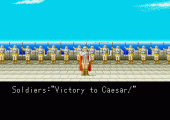
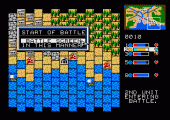
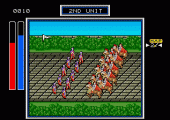
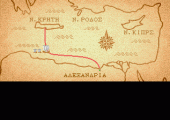
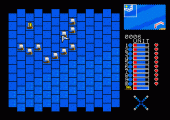
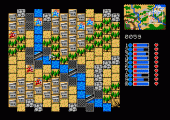
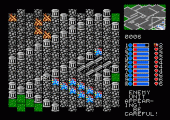
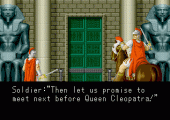
Recent Comments